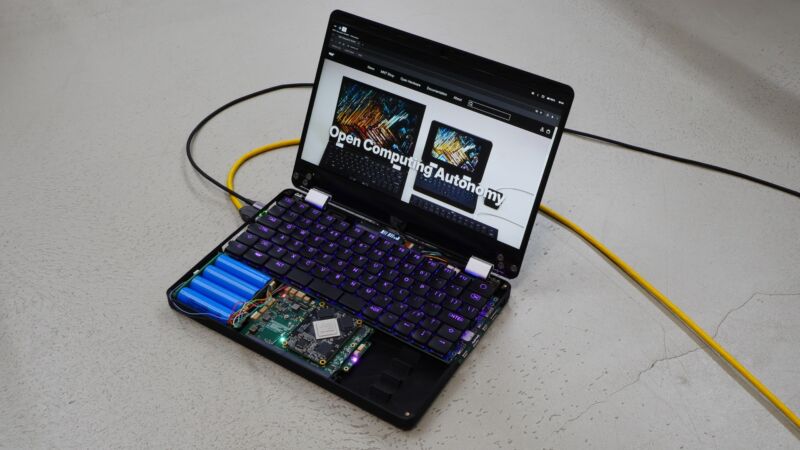mnt reformed —
New design has sleeker profile, uses more RAM and better CPU than the original.

Enlarge / More streamlined (but still user-replaceable) battery packs are responsible for some of the Reform Next’s space savings.
MNT Research
-
The current booting prototype of the MNT Reform Next.
MNT Research
-
The casing prototype is still being prototyped with 3D prints, but the final version will be anodized aluminum.
MNT Research
-
One of three “port boards” that handle internal and external connectivity.
MNT Research
-
More streamlined (but still user-replaceable) battery packs are responsible for some of the Reform Next’s space savings.
MNT Research
The original MNT Reform laptop was an interesting experiment, an earnest stab at the idea of a laptop that used entirely open source, moddable hardware as well as open source software. But as a modern Internet-connected laptop, its chunky design and (especially) its super-slow processor let it down.
MNT Research has been upgrading the Reform laptop and its smaller counterpart, the Pocket Reform, continuously since we took a look at it two-and-a-half years ago. The most significant upgrade is probably the Rockchip RK3588 processor upgrade, which offers four ARM Cortex-A76 CPU cores (the same ones used in the Raspberry Pi 5’s Broadcom SoC) and four ARM Cortex-A55 cores, plus either 16GB or 32GB of RAM. While still not a high-end speed demon, these specs are enough to make it a competent workhorse laptop for browsing and productivity apps.
Now, MNT is revisiting the Reform with a more significant design update. The MNT Reform Next is smaller and thinner, defaults to a more traditional glass trackpad instead of a trackball, and is starting with the Rockchip RK3588 instead of the poky NXP/Freescale processor that the original laptop was saddled with.
MNT says that the new Reform’s thinner profile is enabled by splitting the motherboard into multiple, smaller boards that are easier to replace and by designing “completely custom battery packs that tightly integrated electronics into the mechanical structure.” MNT details a motherboard with a CPU module connected to it and three different “port boards” to add internal and external connectivity.
The batteries themselves are still user-replaceable LiFePO4 batteries, though there are switches on the motherboard for people who want to use Li-ion batteries instead. “This optional user choice trades longer runtime for less safety and environmental friendliness,” according to MNT’s blog post.
The new Reform adds additional ports, including HDMI and USB-C, and it retains the mechanical keyboard that we liked from the original. It charges over USB-C. It also features four PCIe lanes internally for connecting M.2 storage.
Per usual, MNT is announcing this product many months or years before it will be available. The company says the Reform Next is in the “prototype stage,” and to get the first batches, you’ll need to support the project via the Crowd Supply crowdfunding site first. Pricing and more detailed availability information haven’t been announced, but if the idea of an entirely open laptop still appeals to you, the company says it will have more to share “later this week.”